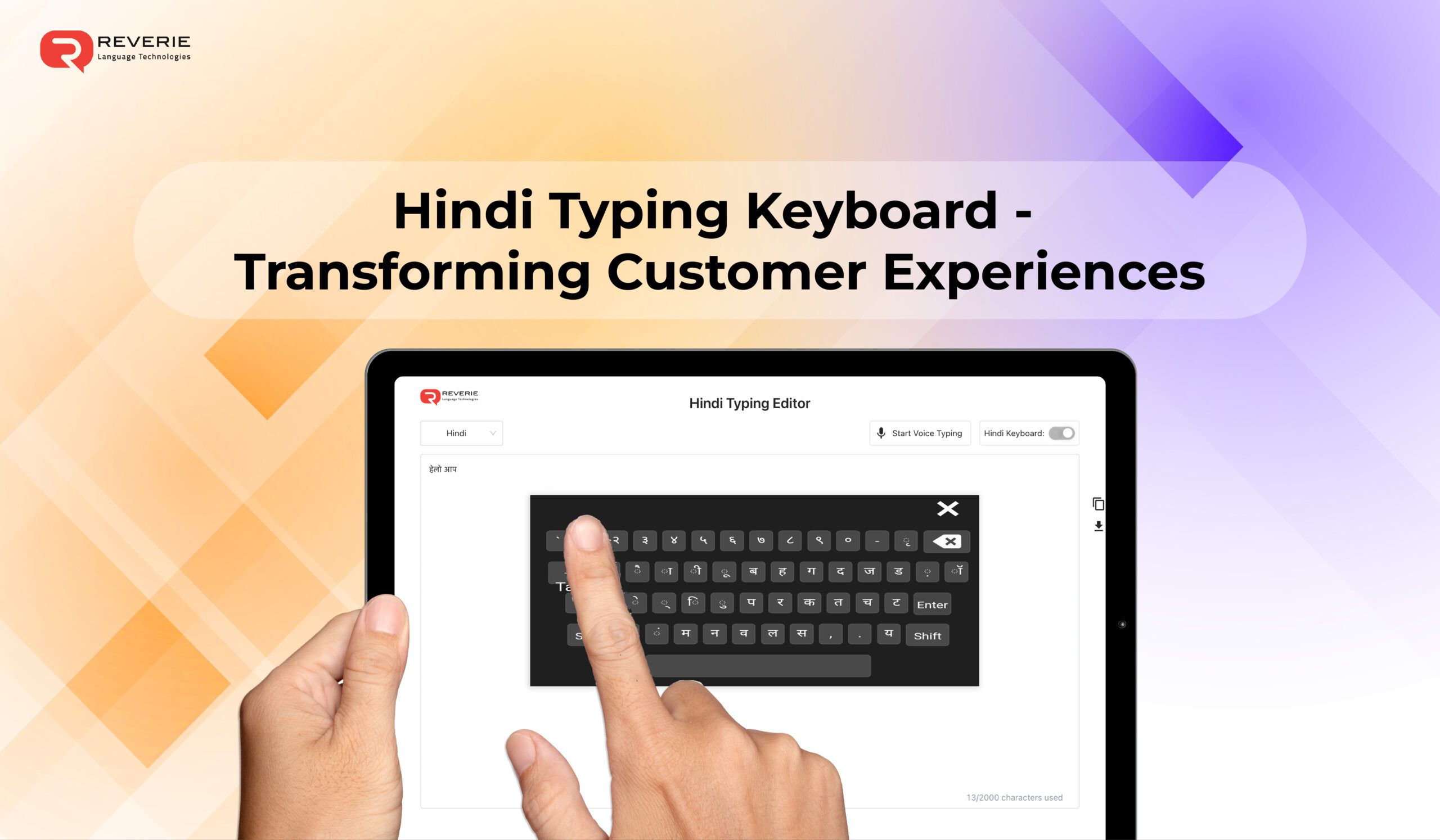The phrase ‘Information available at your fingertips’ has been used by businesses worldwide and for a good reason. The physical buttons of older phones have been replaced by touch keypads of smartphones where customers can easily type and search for information. In a multilingual country like India, this technology has been transformative.
India with a 47% internet penetration rate, and one of the cheapest mobile internet in the world with an average cost of ₹ 14.15 per 1GB of data, is expected to have a smartphone market worth 90 billion U.S dollars by 2032. This smartphone boom in the coming years needs to be tapped into improving the experiences of customers using applications.
In today’s interconnected world, business applications are dominated by English-language interfaces. This limits the businesses from reaching a wider audience in India where English is just one of the 22 official languages with Hindi topping the list. Imagine the profound impact of breaking free of the linguistic constraint of English by adding a Hindi typing keyboard to your application’s interface. This strategic shift not only expands your customer base but also signifies a commitment to inclusivity and personalized customer experience for India’s largest speaking language audience. Let’s delve into how embracing a Hindi typing keyboard in the current English-dominated market can be a successful move for your business.
Mobile Applications: Connecting Businesses With Smartphone Users
By the end of 2024, the estimated number of smartphone users in India will reach 1 billion. Currently, the Indian telecom industry is the second largest in the world with an estimated subscriber base of 1.14 billion by the end of 2022. With such a high penetration rate of smartphones in India, the usage of mobile apps has increased tremendously with the volume of mobile data traffic at more than 13 exabytes per month. Consumers are now engaging with brands and making purchases on mobile phones.
Today it has become imperative for a business to have a mobile optimized website or a mobile application which give a much more personalized experience to the user. Apps are faster for mobile users, have fewer distractions, and come with two most important features: Geotargeting and push notifications. While all these features are great, the success of an application depends on how it caters to its consumer base, and in a linguistically diverse country like India, typing and communicating with the application needs to be multilingual. Adding a multilingual or Hindi typing keyboard to your mobile applications brings positive outcomes for your business.
Multilingual Keyboards: Enhancing Typing Experience in India
Hinglish typing has been on the rise in India. Google Pay, Google’s payment application added Hinglish as a language to cater to audiences who prefer Hinglish. It’s the transliteration of Hindi to English. For example, when you choose Hinglish as a language, the recent payment on the homepage will read ‘Haal hi ke payments’. While Hinglish typing has been prevalent in recent years, Hindi is currently the most spoken language in India with more than 425 million Hindi speakers.
English does not have the same set of characters as Hindi. The typing experiences of someone who types in English will be different than someone who uses the Hindi typing keyboard. The modern English alphabet has 26 letters whereas the standard Hindi alphabet as agreed upon by the Government of India has 46 letters. The perfect multilingual or Hindi typing keyboard maintains uniformity in layout across languages so that the number of rows and key sizes remains the same.
By the start of 2023, the global app engagement rate is just 28%. When non-English speakers interact with your business application, an English typing keyboard is a barrier for them. This inconvenience in communication leads to a drop-off in engagement and uninstallation. Let’s take WhatsApp as an example. India has the most number of active users on WhatsApp with more than 487 million users. The reason behind the vast usability of this instant messaging app is that it has 11 official Indian languages as a part of its multilingual keyboard. WhatsApp’s strategy of introducing a Hindi typing keyboard among other official Indian languages was successful as the name of the app has almost become synonymous with messaging in India.
Understanding that not all your customers will have a grasp of the English language is the foundation of adding a multilingual or Hindi-speaking keyboard to your mobile application. Let’s explore some of the benefits of a multilingual keyboard.
#1 Increase in engagement rate
Despite having good visibility and rankings in search engines, if your mobile application doesn’t cater to the language preferences of your customers, it is bound to decrease your sales. When a customer interacts using a keyboard with the alphabets they are familiar with, he or she engages more with your business and goes deeper into the customer application journey.
#2 Decreases abandonment rate
Apps that are not used by the customer are bound to get uninstalled. The user hits a language barrier when he or she can’t type in the language they are comfortable with. This decreases the usability of your application and increases the abandonment rate leading to uninstallation. Adding a multilingual keyboard prevents the user from quitting before performing an intended task in your application, decreasing your abandonment rate.
#3 Strengthens customer experience
A customer-centric business that shapes its decisions based on the preferences of the customers has the most potential to succeed. Adding a multilingual or Hindi typing keyboard helps your customers to communicate effectively, helping them to better understand your products and services. This enhances your customer experience while also increasing their lifetime value.
#4 Gain the competitive advantage
A multilingual keyboard increases your chances of pulling a wider audience as compared to your competitors. When your customer understands that your brand values them by adding a keyboard with the alphabet they understand, they will choose your brand over your competitors.
Swalekh: Multiple Languages. One Keyboard
Download and integrate Reverie’s Swalekh, a multilingual keyboard with your business application to provide exceptional Indian language typing experience to your customers.
Swalekh is compatible with all text editors with an easy integration using less coding. Take the Indian language typing experience to the next level with two modes of typing.
- Phonetic mode: Generate texts in your preferred Indian language by typing using English letters with the same sound. For example, “Bharat mera desh hai” will be converted to “भारत मेरा देश है”
- Professional mode: Select your preferred language and transform your keyboard layout to type without any errors. For example, if Hindi is your language of choice, convert your keyboard layout to a Hindi typing keyboard.
Contact us and transform your business application with the best Indian language typing experience.



